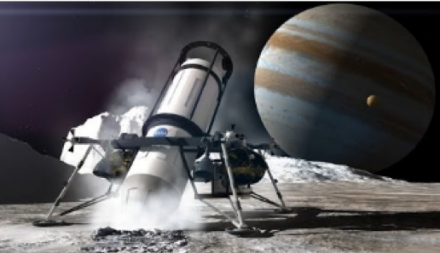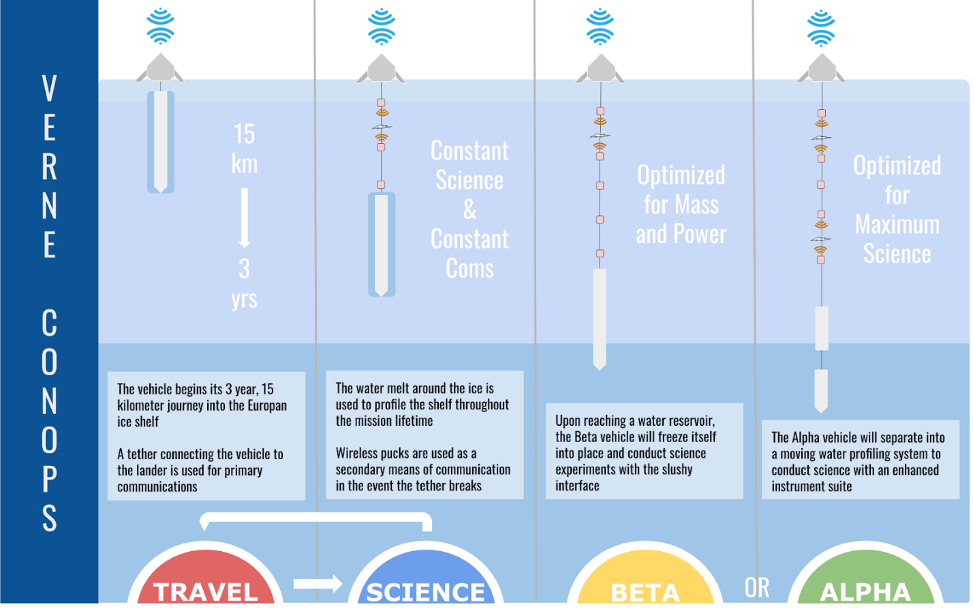VERNE:Vertical Entry Robot for Navigating Europa
Working with Prof. Britney Schmidt in GT's EAS department, the SSDL is participating in a two-year sponsored advanced mission concept study for a 2030’s mission to drill through 15 km of ice and look for life biosignatures in the ocean of Europa.

Description
The Vertical Entry Robotic Navigation of Europa (VERNE) Mission is a joint project between SSDL and the Earth and Atmospheric Science department, and is in response to the NASA Scientific Exploration Subsurface Access Mechanism for Europa (SESAME) request for proposals. This multi-disciplinary team in exploring the pre-phase A design space for a vehicle capable of traveling 15 km into the icy crust of Europa to reach the underwater oceans. It is widely believed that there is a high potential for life or signs of life at locations where ice meets water, so it is the teams objective to take a spacecraft design approach to come up with a vehicle design tailored to life detecting science payloads and experiments that are simultaneously being determined by the science team. The team will then choose critical technology deficits and test hardware prototypes in analog environments to ensure the vehicle design is at a TRL level of 4-5 by May 2021.
Concept of Operations

